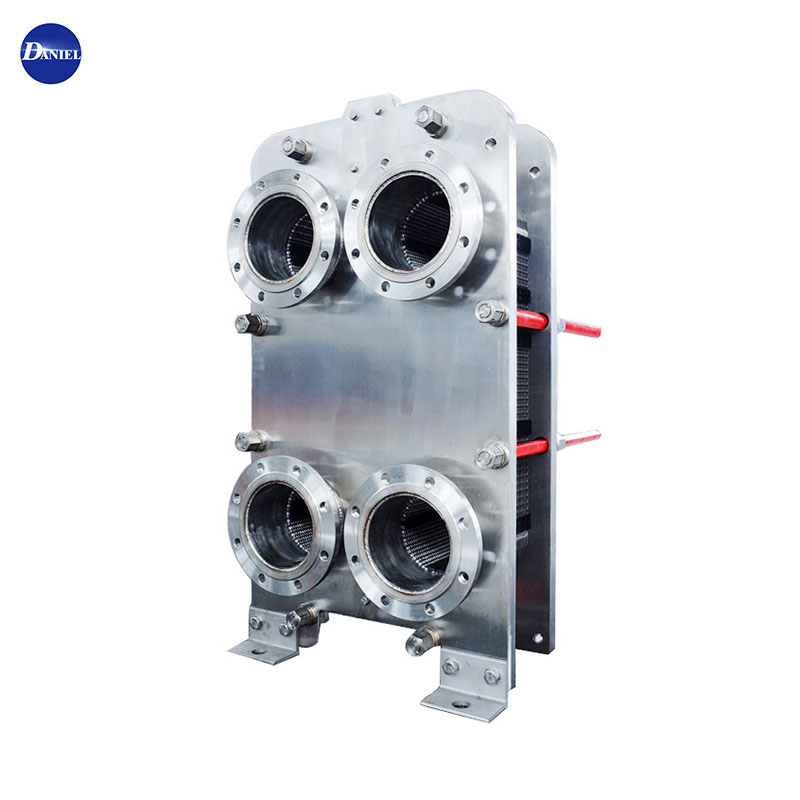
 English
English  Español
Español Português
Português русский
русский Français
Français 日本語
日本語 Deutsch
Deutsch tiếng Việt
tiếng Việt Italiano
Italiano Nederlands
Nederlands ภาษาไทย
ภาษาไทย Polski
Polski 한국어
한국어 Svenska
Svenska magyar
magyar Malay
Malay বাংলা ভাষার
বাংলা ভাষার Dansk
Dansk Suomi
Suomi हिन्दी
हिन्दी Pilipino
Pilipino Türkçe
Türkçe Gaeilge
Gaeilge العربية
العربية Indonesia
Indonesia Norsk
Norsk تمل
تمل český
český ελληνικά
ελληνικά український
український Javanese
Javanese فارسی
فارسی தமிழ்
தமிழ் తెలుగు
తెలుగు नेपाली
नेपाली Burmese
Burmese български
български ລາວ
ລາວ Latine
Latine Қазақша
Қазақша Euskal
Euskal Azərbaycan
Azərbaycan Slovenský jazyk
Slovenský jazyk Македонски
Македонски Lietuvos
Lietuvos Eesti Keel
Eesti Keel Română
Română Slovenski
Slovenski मराठी
मराठी Srpski језик
Srpski језик
Installation of Plate Heat Exchanger
2021-09-15
Installation of plate heat exchanger
In order to make the plate heat exchanger give full play to the good use effect, it is necessary to pay more attention to the installation before use, and the installation work is done properly to ensure the smooth use of the equipment in the future. Its correct installation method must be required.
1. Foundation acceptance: Before installing the heat exchanger, check the basic surface profile, plane position, shape and size, and whether the reserved holes meet the actual requirements, and whether the anchor bolts are in the correct position, whether the nuts and washers are complete, and observe the threads Whether the condition is good; whether the foundation surface on which the shim is placed is smooth, etc.
2. Check the equipment out of the box.
3. According to the equipment installation size given in the installation drawing, make the foundation platform and arrange the anchor bolts;
4. When moving and transporting, avoid violent collision and damage to the plates;
5. Before installation, check and clean up the debris in the pipeline to prevent debris from entering the inner block of the flow path; correspondingly connect the pipeline, and install a thermometer and pressure gauge on the pipeline near the heat exchanger to facilitate the inspection of the operation of the heat exchanger ;
6. Place the shim: Before installation, place the shim on the foundation. In order to make good contact between the two, the place to be placed needs to be leveled.
7. Check the clamping studs, if there is any looseness, tighten and reduce the parallelism deviation between the two compression plates;
8. In addition to special requirements on the process, generally first open the valve that needs the cold medium on the heating or cooling side, and slowly open the valve on the heat source or cold source side medium after the flow is normal;
9. According to the import and export temperature and pressure data, open and start the relevant valves in the appropriate position to maintain a stable working state;
10. In normal use, the temperature and pressure status parameters should be recorded frequently, and the working condition of the equipment should be checked; the sealing position should be checked frequently to observe whether there is leakage and take measures such as pressure relief and clamping;
11. Use corrosive and flammable media, and it is recommended to add thin iron sheet protection devices on both sides of the plate bundle;
12. The plate can be cleaned with water or chemical cleaning agent, and a soft brush should be used.
13. Leveling and aligning: After installation, level the heat exchanger with a spirit level, so that each pipe can be connected to the pipe without any force.

In order to make the plate heat exchanger give full play to the good use effect, it is necessary to pay more attention to the installation before use, and the installation work is done properly to ensure the smooth use of the equipment in the future. Its correct installation method must be required.
1. Foundation acceptance: Before installing the heat exchanger, check the basic surface profile, plane position, shape and size, and whether the reserved holes meet the actual requirements, and whether the anchor bolts are in the correct position, whether the nuts and washers are complete, and observe the threads Whether the condition is good; whether the foundation surface on which the shim is placed is smooth, etc.
2. Check the equipment out of the box.
3. According to the equipment installation size given in the installation drawing, make the foundation platform and arrange the anchor bolts;
4. When moving and transporting, avoid violent collision and damage to the plates;
5. Before installation, check and clean up the debris in the pipeline to prevent debris from entering the inner block of the flow path; correspondingly connect the pipeline, and install a thermometer and pressure gauge on the pipeline near the heat exchanger to facilitate the inspection of the operation of the heat exchanger ;
6. Place the shim: Before installation, place the shim on the foundation. In order to make good contact between the two, the place to be placed needs to be leveled.
7. Check the clamping studs, if there is any looseness, tighten and reduce the parallelism deviation between the two compression plates;
8. In addition to special requirements on the process, generally first open the valve that needs the cold medium on the heating or cooling side, and slowly open the valve on the heat source or cold source side medium after the flow is normal;
9. According to the import and export temperature and pressure data, open and start the relevant valves in the appropriate position to maintain a stable working state;
10. In normal use, the temperature and pressure status parameters should be recorded frequently, and the working condition of the equipment should be checked; the sealing position should be checked frequently to observe whether there is leakage and take measures such as pressure relief and clamping;
11. Use corrosive and flammable media, and it is recommended to add thin iron sheet protection devices on both sides of the plate bundle;
12. The plate can be cleaned with water or chemical cleaning agent, and a soft brush should be used.
13. Leveling and aligning: After installation, level the heat exchanger with a spirit level, so that each pipe can be connected to the pipe without any force.

Previous:We want to visit your company?
X
We use cookies to offer you a better browsing experience, analyze site traffic and personalize content. By using this site, you agree to our use of cookies.
Privacy Policy





